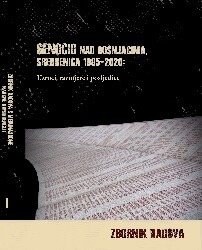Planiranje i upotreba zabranjenih hemijsko-bioloških sredstava: slučaj sigurna zona UN-a Srebrenica i Bihać
Planning and Use of Banned Chemical-biological Agents: The Case of the UN Safe Zone Srebrenica and Bihać
Author(s): Mujo Begić
Subject(s): Political history, Criminology, Studies in violence and power, Victimology, Transformation Period (1990 - 2010), Peace and Conflict Studies
Published by: Institut za istraživanje zločina protiv čovječnosti i međunarodnog prava Univerziteta u Sarajevu
Keywords: UN Protected zones of Srebrenica and Bihać; chemical-biological weapons; special operations;
Summary/Abstract: During the preparations and aggression against the Republic of Bosnia and Herzegovina, the Yugoslav People’s Army and the Serbian military and police forces planned and conducted special operations for the use of illicit chemical and biological agents in operations in the UN protected areas of Srebrenica and Bihać. In planning the aggression against the Republic of Bosnia and Herzegovina, the Yugoslav People’s Army implemented a special program called “BIO-131-S”, which also referred to Srebrenica and Žepa. In 1995, the Serbian Army of Krajina, planned and implemented a special operation “MACH-1” against the civilian population and units of the 5th Corps of the Army of the Republic of Bosnia and Herzegovina of the UN Protected zone of Bihać, in order to poison the population with contaminated food delivered to this area. Using all means, even prohibited means, the aggressor wanted to occupy the territories of these two UN protected zones in all possible ways.
- Page Range: 459-482
- Page Count: 24
- Publication Year: 2021
- Language: Bosnian
- Content File-PDF

